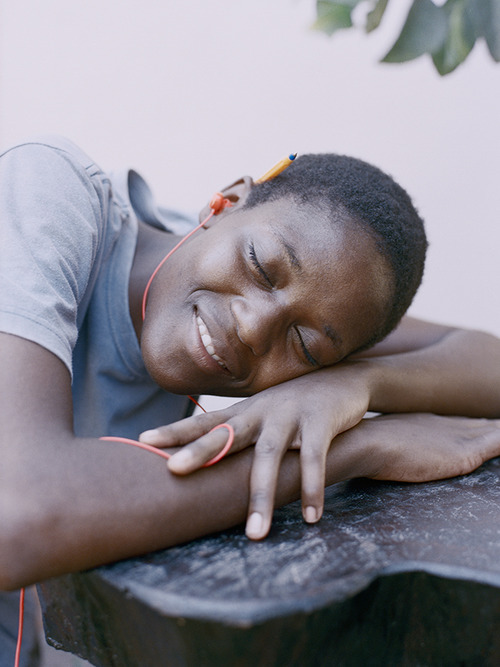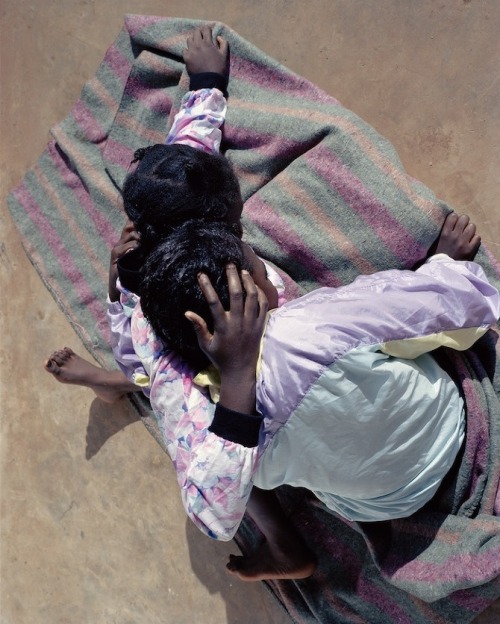Osma Harvilahti vs. Viviane SassenAlthough distinct in their styles and interests, what I greatly a
Osma Harvilahti vs. Viviane SassenAlthough distinct in their styles and interests, what I greatly appreciate about these two photographers is the different kind of vocabulary they using for portraits, particularly within the African continent. Sassen’s series focuses on Kenya, while Harvilahti’s was shot in Morocco. These are very different environments and cultures, and each photographer has different interests that aren’t specifically about creating a portrait of a person, or of their culture. But within their photographs is an affinity for creating intimate moments with their subject, but in a way that does not render their bodies, thoughts or emotions explicit before the camera. Instead a intimacy is laced with mystery, half turned faces and shadowed gazes. But this mystery does not push you back into a sense of ‘otherness’ or the exotic, it draws you in (and most importantly, on a human level). Rather then 'presenting’ a person within the centre of the camera frame, laid bare for the viewers gaze, a particular moment in time is elevated. Bodies fill beautiful compositions of light, colour and environment, but they never feel objectified or simply props to illustrate a culture or occupation or costume.They are not the only photographers to do this, and far from alone in a well established movement of self-made photographers within a diversity of backgrounds and cultures in Africa. But I was struck by the affinity of their work and thought I’d try posting them together. Further insights on Sassen’s techniques via thisispaper: With the help of leaves, cast shadows or even turning their back to the camera, Sassen’s models in her collection of photographs ‘Flamboya’ anticipate and prevent themselves to become the object of the inquisitive gaze of photographer and potential viewers alike. Sassen’s models are cast as individuals aware of the ritual that constitutes the act of being photographed and actively participate in it. This dimension mirrors Sassen’s way of working. Almost none of the individuals featured in her work are professional models, they are simple passers-by met on the street or other public places. Yet, Sassen’s work is not strictly documentary. Rather than being interested in the features of a specific individual, she aims at producing a kind of archetypal image that she composes (she privileges the verb, to compose, over the more commonly used, but in the case of the description of her work inadequate, to stage). Although most of Sassen’s ‘Flamboya’ photographs are portraits, none of them allows viewer to easily (or not at all) distinguish the facial features of most of her models. Their personal identity is symbolically – and sometimes literally — left in shadow. Furthermore, just as the individuals portrayed wear clothes or seem to use their own body or natural environment as a camouflage, the quantity of descriptive elements in terms of geography and culturally laden props are restricted heavily. This apparent parsimony of visual information is counter-balanced by the use of bright colors and Sassen’s high sensibility for contrasts and appealing compositions. Although crucial aspects of the life conditions of the individuals portrayed still surface, Sassen’s ‘Flamboya’ photographs transcend the documentary and reach the metaphoric. -- source link
Tumblr Blog : 5centsapound.tumblr.com
#osma harvilahti#viviane sassen#african photography#decolonize#portrait photography







